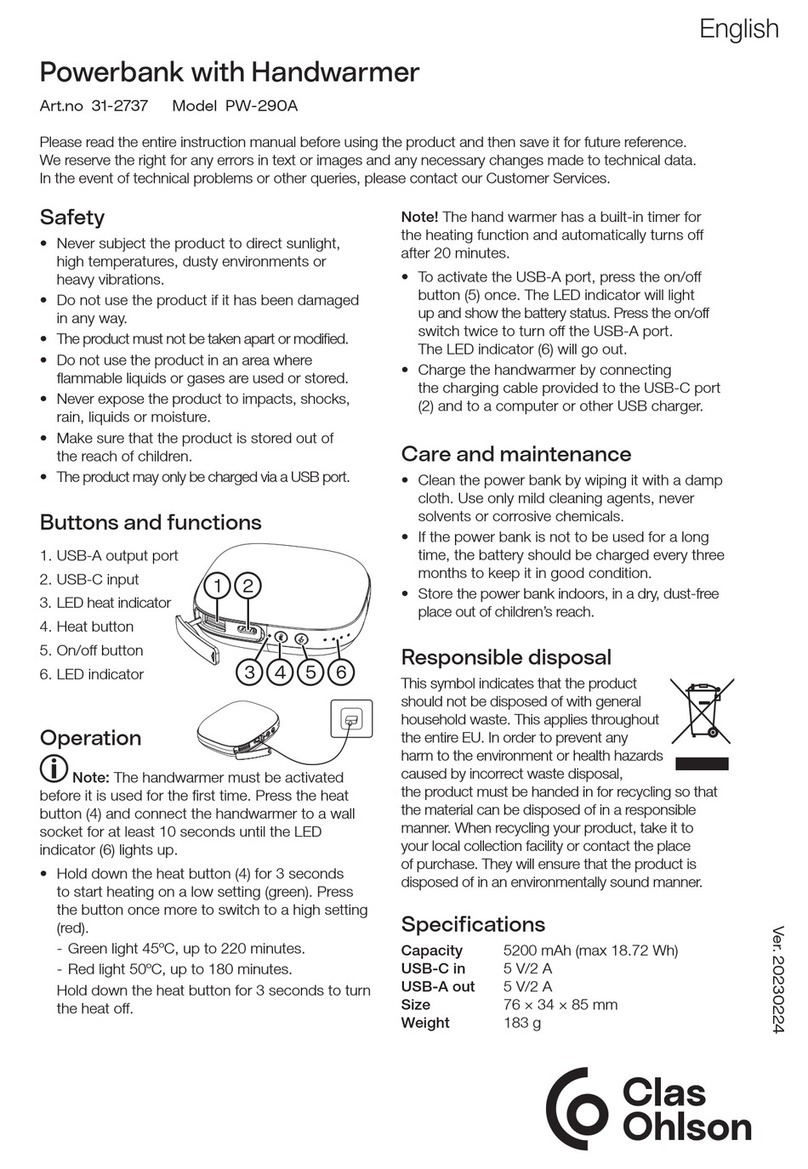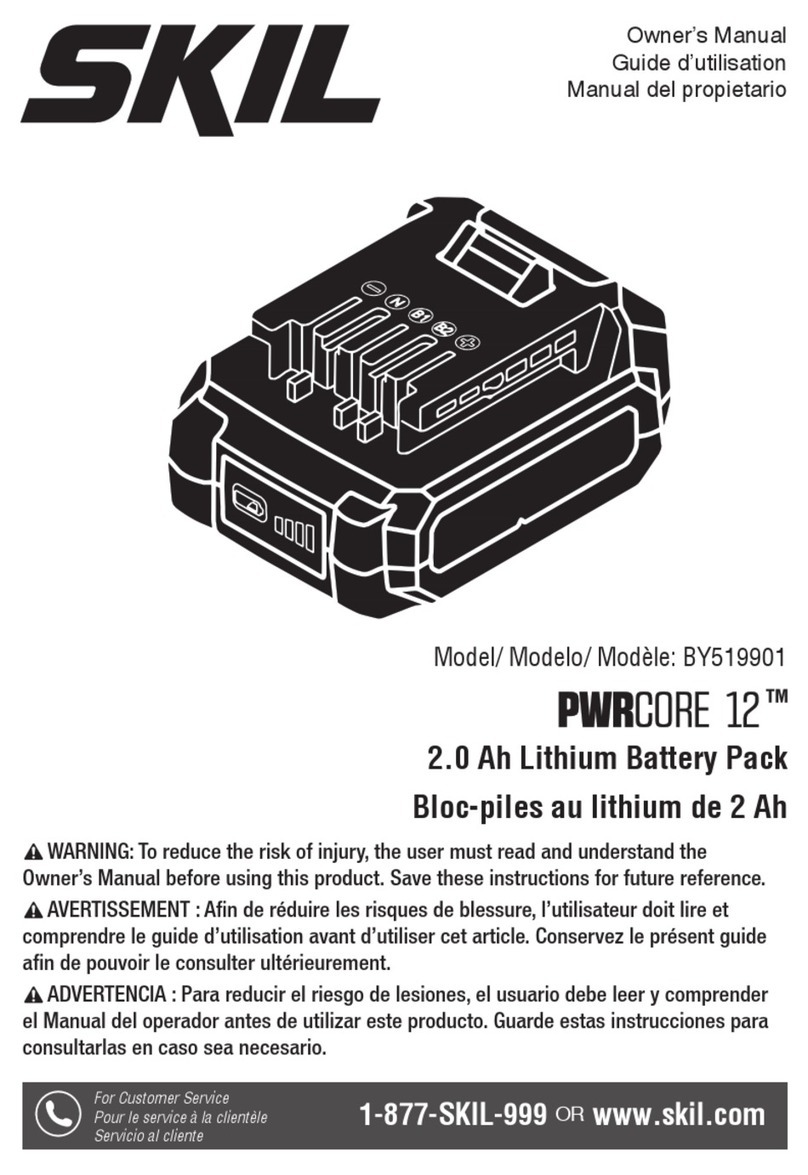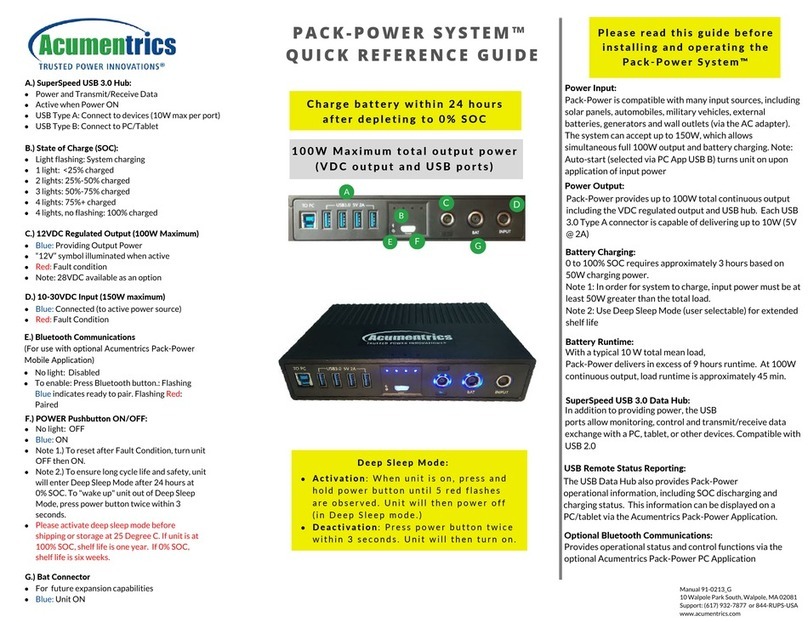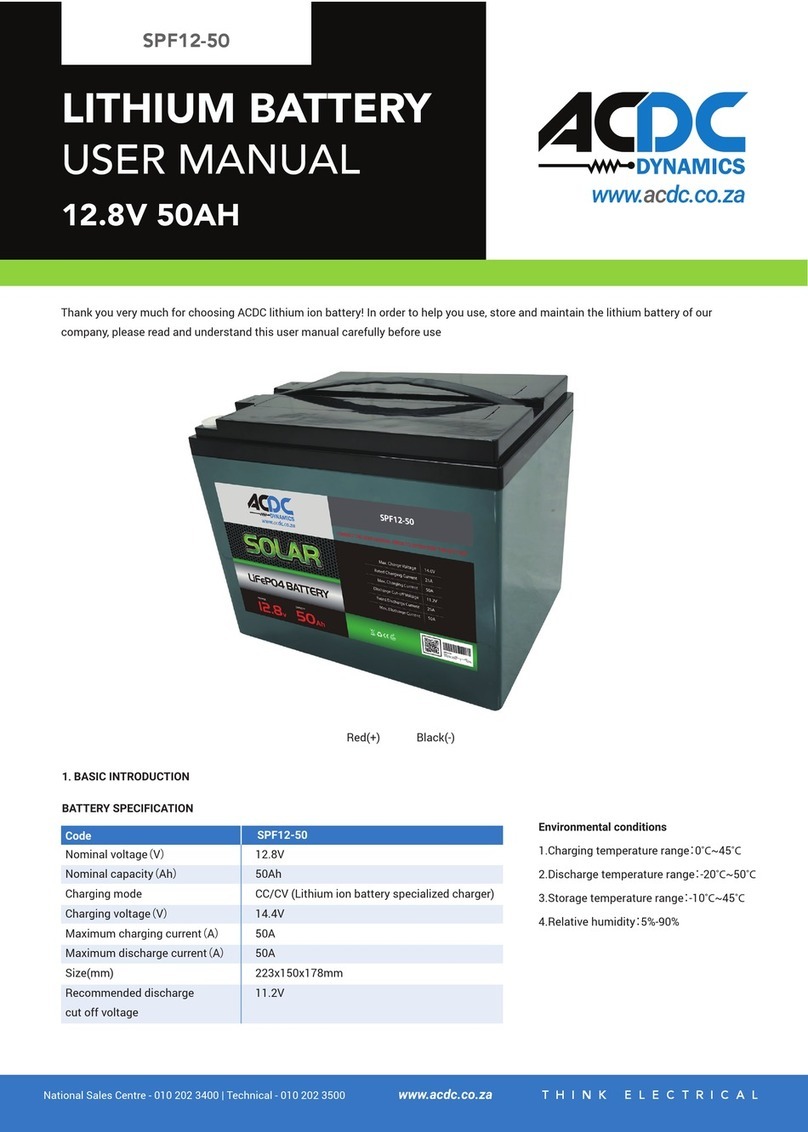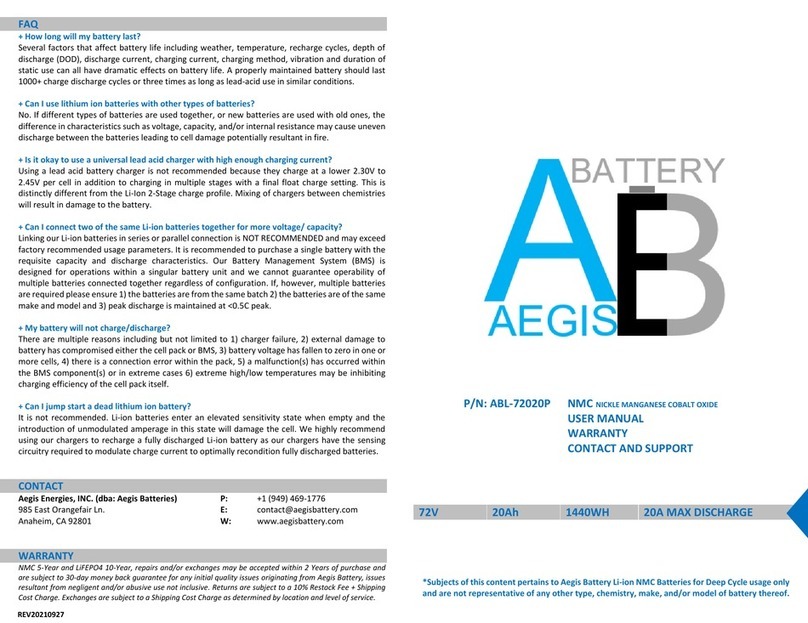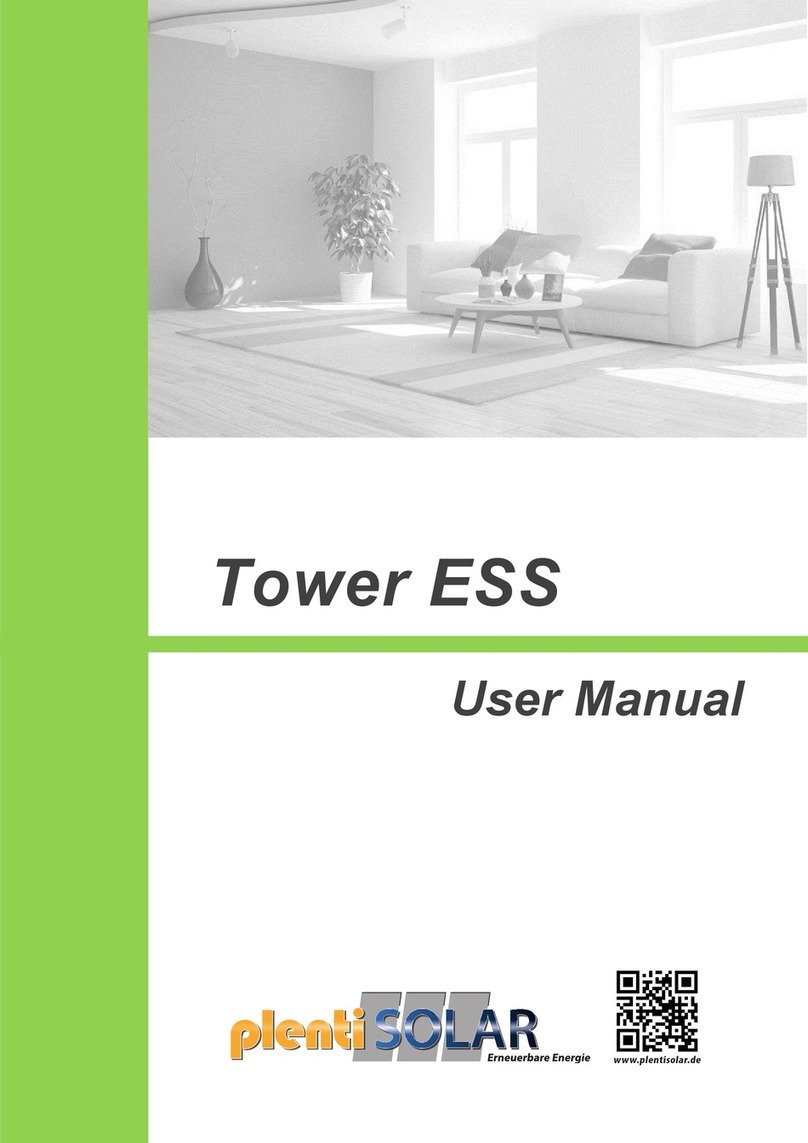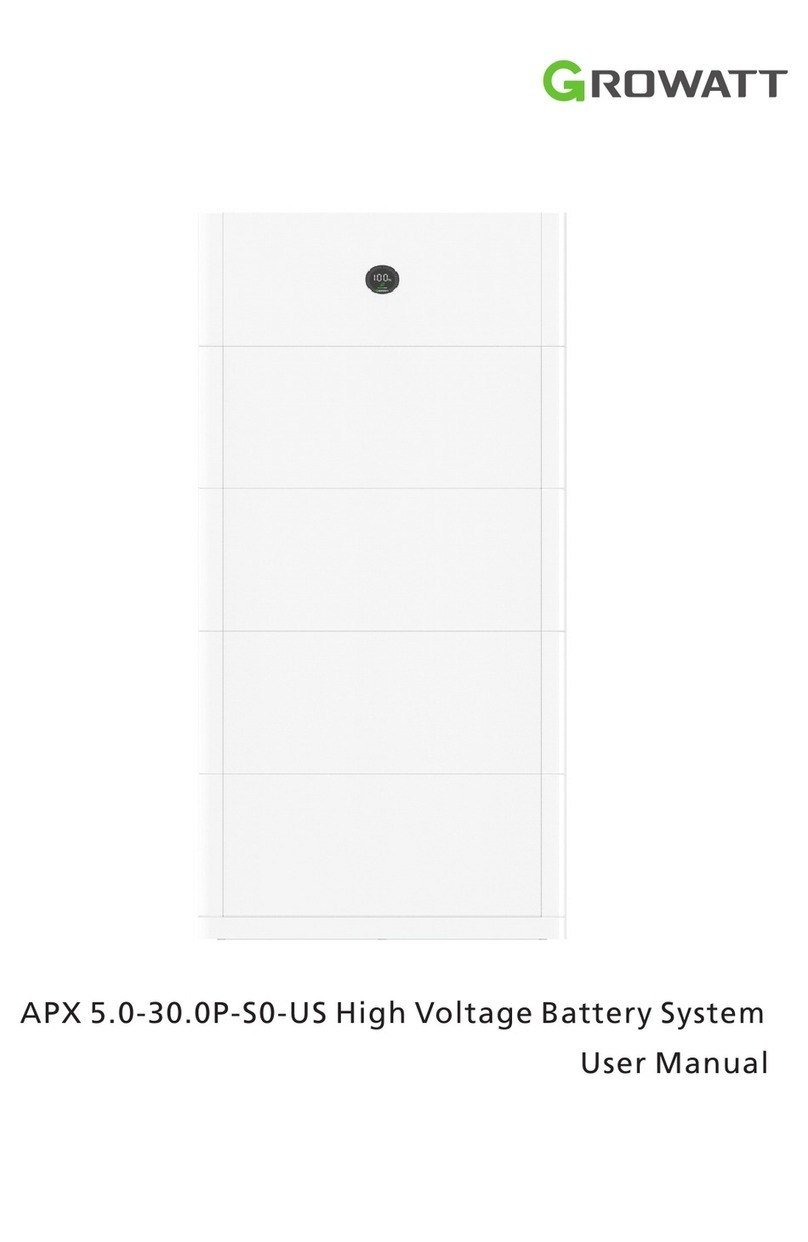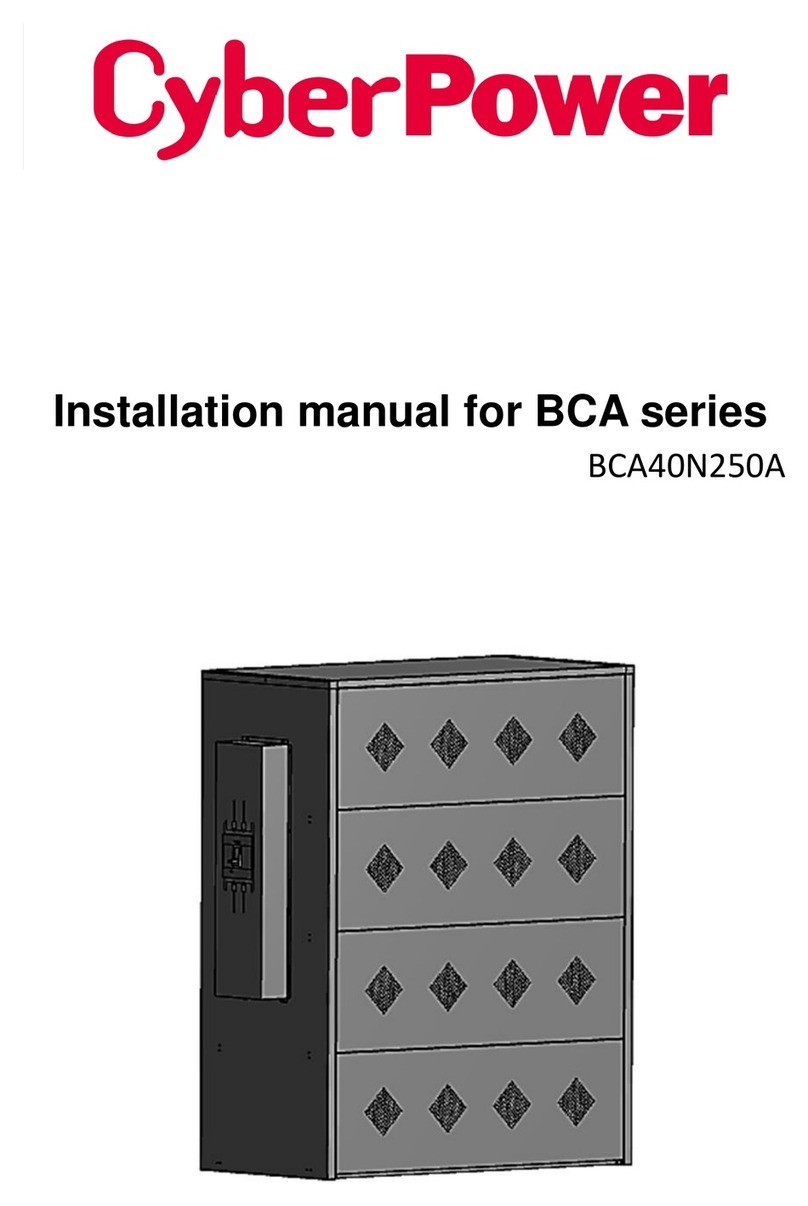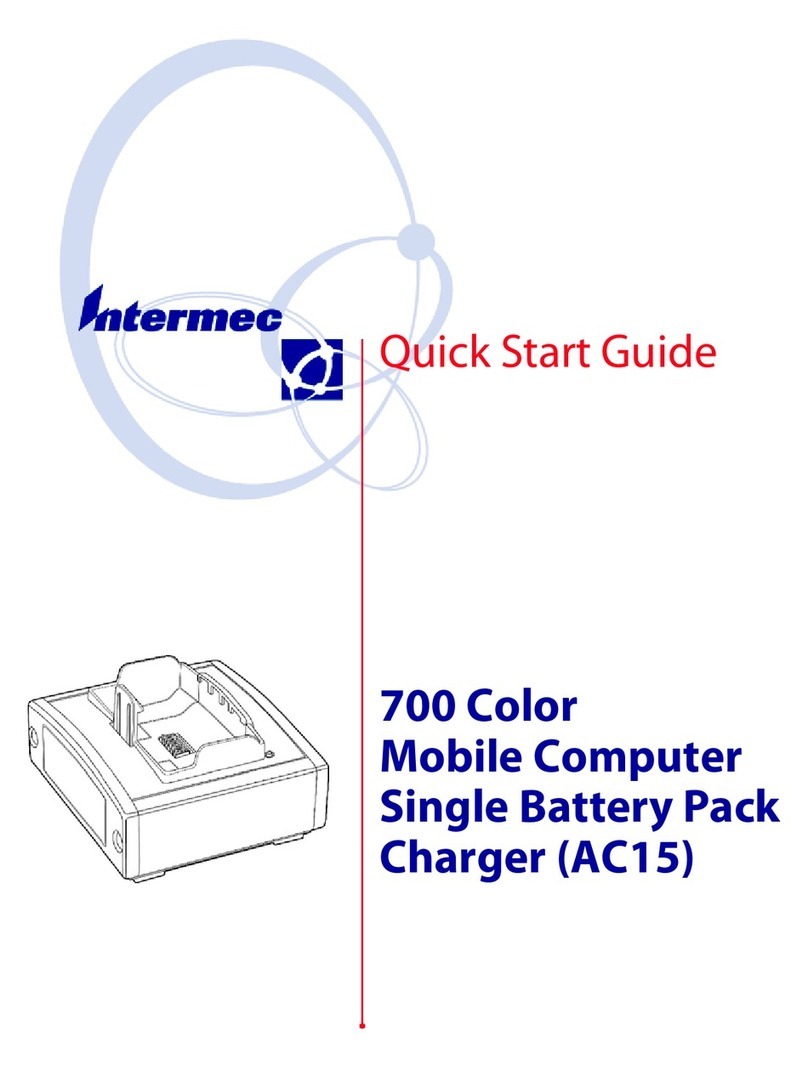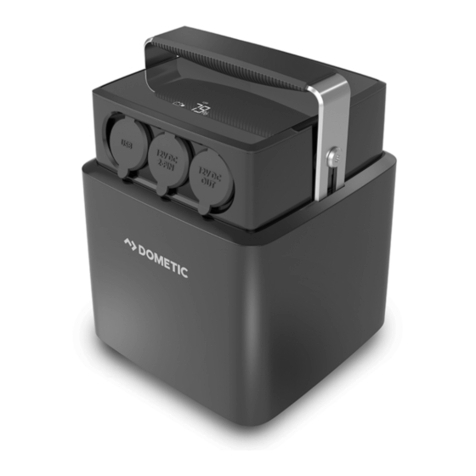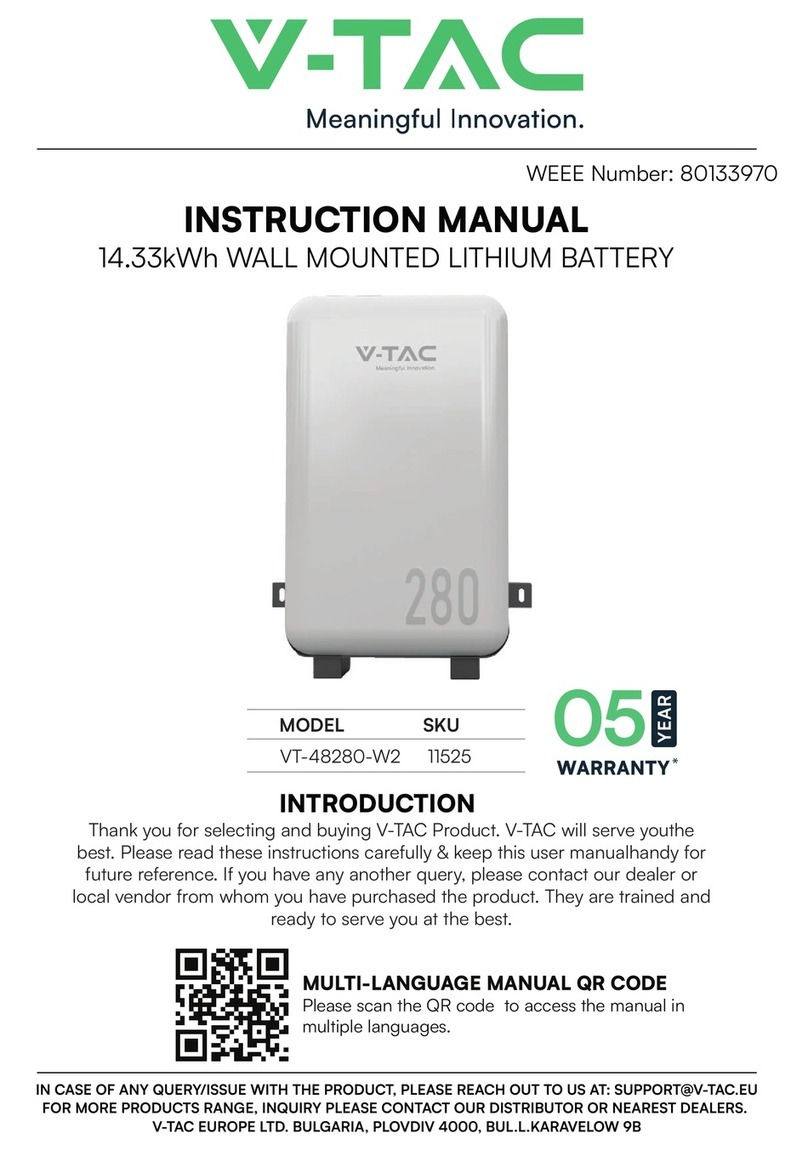
5
Do not place battery tools or their batteries near fire or heat.
Charge battery pack within the required temperature range.
Store charger and battery pack in locations where temperature
is within the recommended storage temperature range. This is
important to prevent serious damage to the battery cells.
Do not crush, drop or damage the battery pack. Do not use a
battery pack or charger that has been dropped or received a
sharp blow. A damaged battery is subject to explosion. Properly
dispose of a dropped or damaged battery immediately.
Do not insert battery pack in charger if battery pack case is
cracked. Using damaged battery pack may result in electric shock
or re.
Batteries vent hydrogen gas and can explode in the presence
of a source of ignition such as a pilot light. To reduce the risk
of serious personal injury, never use any cordless product in the
presence of open ame. An exploded battery can propel debris and
chemicals. If exposed, ush with water immediately.
Do not recharge battery in damp or wet environment. Do not
expose charger to rain or snow. Water entering battery charger
may result in electric shock or re.
Do not store outside or in vehicles.
Do not store battery pack in charger. Battery pack stored in
charger over a long period of time could lead to battery pack
damage and re.
Battery leakage may occur under extreme usage or temperature
conditions. Avoid contact with skin and eyes. The battery liquid
is caustic and could cause chemical burns to tissues. If liquid comes
in contact with skin, wash quickly with soap and water. If the liquid
contacts your eyes, ush them with water for a minimum of 10
minutes and seek medical attention.
Do not let gasoline, oils, petroleum-based products, etc. come
in contact with plastic parts. They contain chemicals that can
damage, weaken or destroy plastic.


